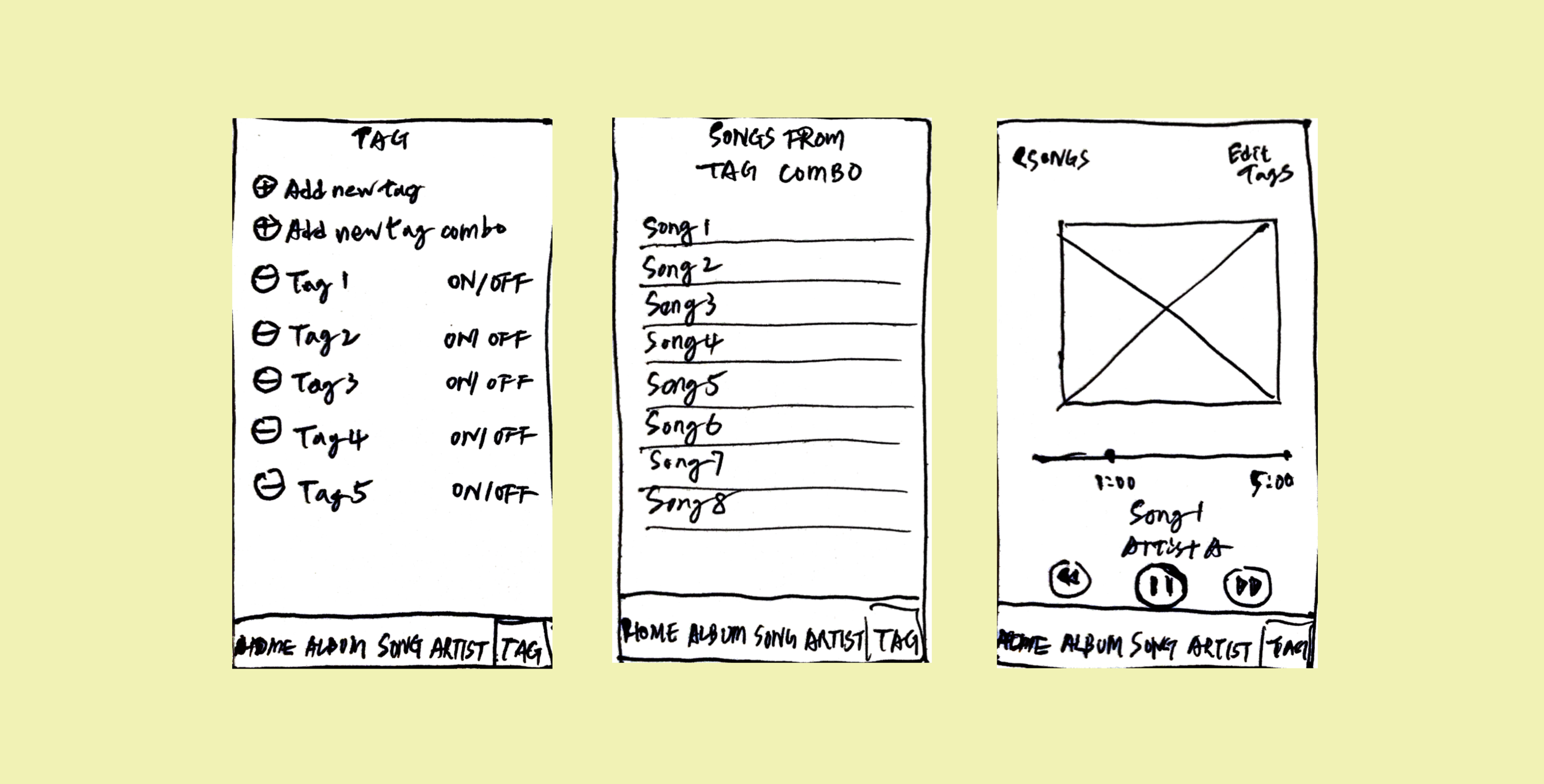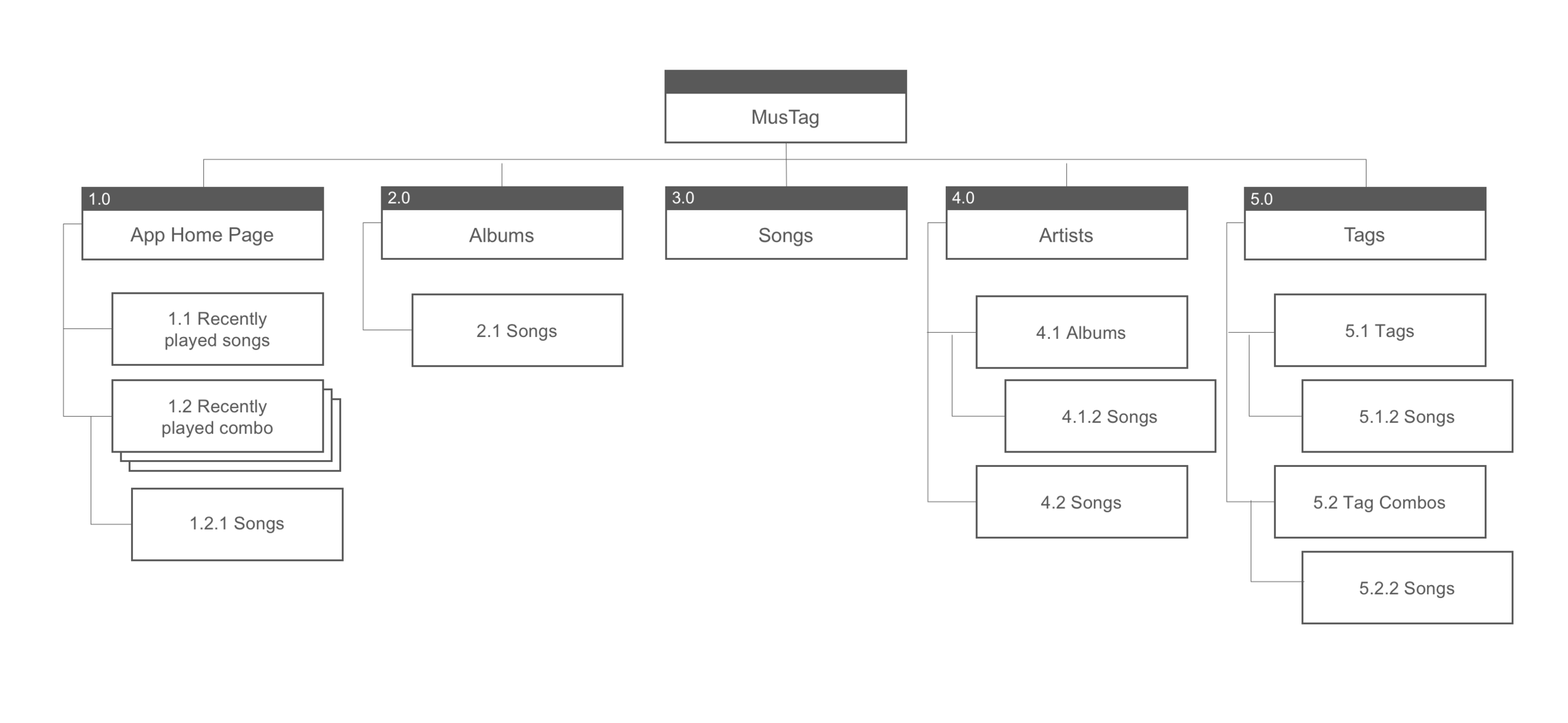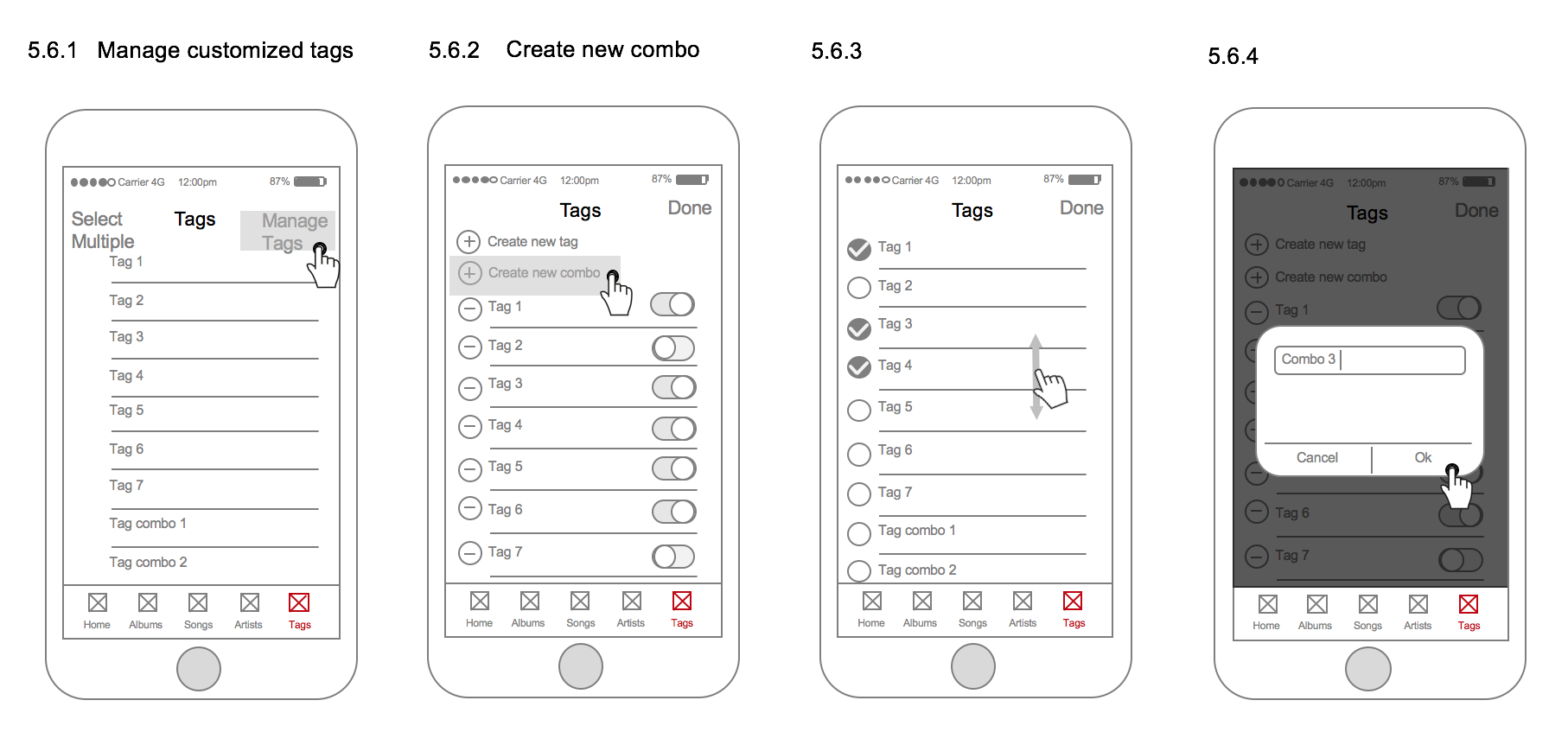Mustag - an app for music tagging
MUSTAG = Music + tag
In 2017, I tried to redesign how music streaming apps could help people finding the music they want. The new feature was not a drastic change, but it was a fresh trial resulted from opportunity I spotted in my own and my friends' lives.
rethinking music listening
inception
I love music and listen to a varied genres of music. Myself first came across difficulty in finding the music with best fit when making wedding videos for my friend.
My friend got married in Greece following orthodox traditions and we all flew there to celebrate with her and the husband’s Greek family. It was a special experience. She wanted to play 2 videos on her Taiwan wedding banquet, one as a record of our Greece trip and another for she and her husband’s love story. As such, I was trying to find a cheerful and heartwarming song for the first video, and a touching but at the same time heart wrenching song for the second video.
Songs on my ‘wedding’ playlist all failed to meet my expectation.
This was when I started to think, why isn’t playlist, or any other sorting method, helping me to find the music I want? Is it possible that we sort and find the songs in a better way?
the challenge
Any music streaming app, no matter on a laptop or on a mobile device, may host a lengthy list of songs and every now and then, we will need to find the songs fit best to certain scenarios.
The current sorting methods – by album, artist, genre, playlist…etc., are not always helping us to find exactly what we want. Then how?
MY Approach
Design thinking process in a nutshell. How I came up with MusTag App prototype can be illustrated in the following phases.
project timeline
From JUL 2017 to OCT 2017.
discover
cause of the challenge
ANALYSIS ON DESIGN OF CURRENT APPS
I did market research on currently available apps. There is limitation in current design of the most popular music listening apps.
If we put aside the default sorting methods, i.e. by artist, album, genre, and so on, there is only ‘playlist’ that allows users to customize and categorize songs by their own preference. Some apps allow users to combine 2 or more playlists, by doing so, an extended playlist with more songs is created.
Back to my scenario given in inception, if I have 2 playlists, 1 marked as cheerful and 1 marked as heartwarming, when I try to find a song that is both cheerful and heartwarming, I have to go through every song categorized under these 2 playlists because I have no way to filter out songs meeting both criteria.
USER INSIGHTS
I also conducted customer research by interviewing 6 of my friends who use music streaming apps including iPhone music, Spotify and KKbox. I found that most people having habit maintaining their own playlists encounter the same problem I had from time to time because they listen to different music under different circumstances. People who just shuffle the songs all the time or seldom have the needs to find specific songs, care very less, or even don’t care about how to find songs from their phones or laptops.
Through affinity clustering, I further discovered 3 key insights that could cover common patterns of music listening among those who have habit maintaining their own playlists.
define
the persona
According to the insights, I could better define what’s the problem to solve and whom I’m solving for. The persona can be concluded as the follows, and this type of users, may have difficulty in finding specific songs they are looking for in their song database.
the solution
The solution for solving the defined problem, then will be an app focuses on adding a feature that allows users to categorize and organize the songs in a way they could find songs on their mobile devices to meet certain needs and for certain situations.
ideate
new sorting method
While I brainstormed with myself on how to solve the problem, music tagging system came to my mind. If we can find photos and articles by ‘tags’ then why not we add different ’tags’ to songs?
Back to the scenario in inception, with tags, if I have 2 tags attached to different songs, 1 is heartwarming and the other is cheerful, when I try to find a song that is both cheerful and heartwarming, I can filter out songs not meeting both criteria because by selecting 2 tags, I result focuses on the intersection of the tags. In this way, I can find songs I need quicker and easier.
The comparison of how playlist and tag functions respectively can be shown clearer by the below pictures. Whenever users select different tags, the app can can generate a new playlist for the users.
Flexibility is where tag out beats playlist.
Based on the idea, I started to imagine how the tagging could work like and sketch my thoughts on papers.
I ideated on how the tagging functionality should operate and how it can be incorporated into music streaming app, but at the same time, I wanted to keep it simple.
I decided to keep other basic sorting methods including album, song and artist, because from my interviews I found these are the basics that meet most people’s listening needs; however, I replaced playlist with tag as it has more versatility but remains similar function as playlist.
information architechure
After the main concept has been sketched down, I also created information architecture of the app.
prototpye
wireframes
Based on the information structure, I drew wireframes to illustrate the user interface and operating steps of different functionality. The below are parts of the wireframes that shows user flow on using the app as example.
test
As wireframing was finished, I tested the app's low-fidelity design with friends fell under the definition of the persona I targeted. One of them provided a feedback on how the tagging can work better.
Initially I only designed to enable adding songs to certain tags or tag combinations. However, the friend suggested that I can try to prompt people to add and edit tag while they listen to the songs, and allow them to tag the songs while listening. This enable the users utilize tags in two ways and increase the usability of tags in the app.
REfine
final design
After refining how the app works based on testing feedbacks, I revised my low-fidelity and high-fidelity prototype and demonstrated user flow for operating the functions using Principle.
I made a video as a quick demo on how to use the tagging functionality as well as how to navigate among other sorting methods.
Key features demonstrated in this video are summarized as below.













